New Hippo and Penguin Exhibit to Open This Fall – Water’s Edge: Africa Animal Care Manager, Jeremy Dillon, shares the latest from the hippo and penguin exhibit, set to open this fall.
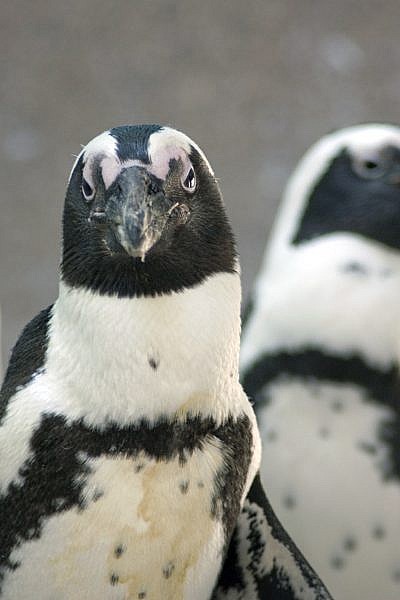

Have you noticed a few new faces and interesting accents around CMZoo lately? Get to know some of our visiting keepers, from Melbourne Zoo, in Australia, and hear about their favorite experiences from their time with us!
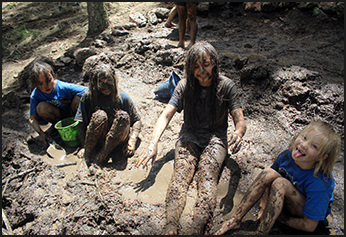

IT’S MORE THAN JUST AN EXCUSE TO GET DIRTY
Did you know that there is an international day dedicated to celebrating mud? June 29 is International Mud Day, and it’s more than just an excuse to get really, really dirty.
International Mud Day may not seem to have an obvious connection to animals or zoos, but connecting kids with nature allows them to become stronger environmental stewards who are capable of changing the world someday. Mud Day is definitely making those connections and fostering those stewards.
International Mud Day started because a school in Australia and a school in Nepal wanted to create a day where kids from two different worlds could play in nature at the same time. The kids from Nepal could not afford to get a set of clothes dirty, so the Australian students raised funds and sent clothes so they could play together on the same day. That was ten years ago. Now, groups all over the world celebrate International Mud Day, including Cheyenne Mountain Zoo’s summer camp and teen program participants.
This year, summer campers spent an entire week dedicated to mud! Playing mud games, creating mud crafts, making mud enrichment for animals and more. You name it, the campers successfully incorporated mud into it, every day.
The teen program spent several days creating mud activities and helping to prepare the famous CMZoo Mud Pit for Friday’s finale of mud week. Campers and teens celebrated Mud Day on Friday, June 28 this year and spent the entire day on the Zoo’s Nature Trail splashing and “bathing,” throwing, and wearing mud from three cascading mud pools.
Kids from four to seventeen years old participated in this celebration of nature play, with each age group interacting in the exact same ways: making face paint, plopping it onto a friend’s head, and trying to get their shirts and shorts as muddy as possible. Kids end up with mud in their ears, mouths and hair, and enjoy every minute of it.
If you are interested in learning more about International Mud Day or are looking for ways to celebrate it next year, please visit https://worldforumfoundation.org/workinggroups/nature/mud-day/.
Back to The Waterhole Home Page
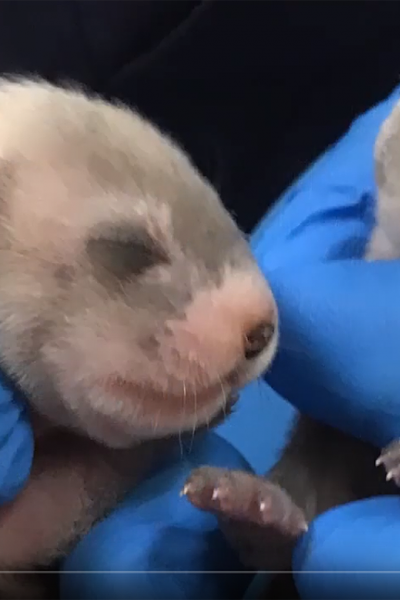

CMZoo’s conservation team gives an update on its black-footed ferret and Wyoming toad breeding programs. The two important breeding and release efforts contribute to saving species that were once considered extinct in the wild.
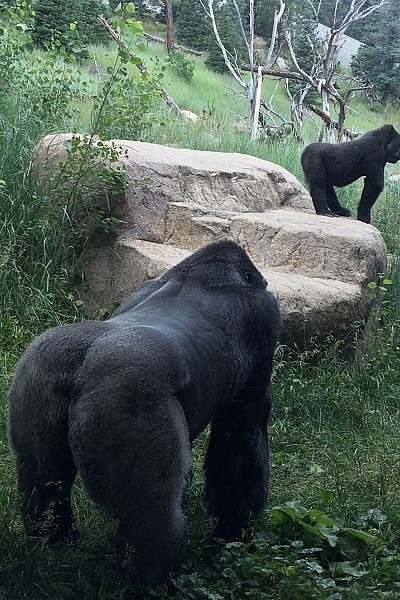

Back to The Waterhole Home Page
INTRODUCTIONS CONTINUE AS KEEPERS REMAIN FLEXIBLE
Since he arrived in May 2016, Goma, Cheyenne Mountain Zoo’s 28-year-old silverback Western lowland gorilla, has been working to incorporate with the gorilla troop of four females, Juju, Roxie, Asha and Kwisha. With a focus on providing an environment which helps all of the gorillas feel safe and in control, keepers are beginning to see promising interactions.
Goma came to CMZoo on a breeding recommendation with one of the females, but the gorillas need to live as a cohesive group before bringing any offspring into the mix, so the females who are young enough to conceive take oral contraceptives for the time being.
Although introductions have been somewhat unusual and challenging, CMZoo keepers and staff continue to stay flexible and seek new ways to provide an environment that promotes positive interactions between Goma and the female gorillas. Goma, who lived with another male gorilla for about 20 years at his previous home, seems to prefer alone time more than most other male gorillas. Staff are working to set the stage for Goma to discover that life with females could be a desirable situation for him.
“He seems to like his peace and quiet, and doesn’t seem like he’s fully convinced about how these ladies can bring him value,” said Dina Bredahl, senior lead keeper in Primate World, who has worked with the primates for nearly 20 years. “We’re figuring out what’s valuable to him, as an individual. He seems to like it when his behavior and movements influence what the females do and where they go. He likes being dominant and keeping the peace among the ladies. We’re looking for opportunities to help him understand that he can have those things, as an integrated part of this group.”
Allowing Goma to have his solitude while providing opportunities for him to adjust to life as a troop with the females is a delicate balance that requires respectful patience for their process. Keepers follow the gorillas’ lead, by collecting and discussing data on the gorillas’ behavior during introductions and adjusting what they do based on that information so the introductions are as calm and safe as possible, for all involved.
Summertime in Colorado is the best time to work on gorilla introductions, because it allows the gorillas into indoor and outdoor spaces. They have more space to be together if they want to be, while having options to be away from each other.
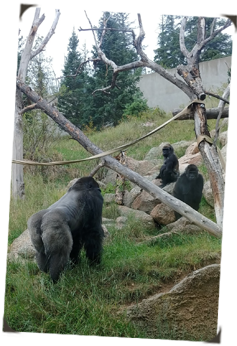
“We do introductions based on their behavior,” said Bredahl. “If it seems like they’re acting unusual or uncomfortable, we will give the gorillas the option to separate in their respective spaces for the rest of the day and will try again the next day.”
When they’re separated, the four females live together peacefully with Goma nearby next door, where they can still hear, smell and see each other. When they’re together, keepers have found it works well to open the doors to all indoor spaces and the outside exhibit. When the gorillas have had enough time together, they have ways of letting the keepers know.
“We know these gorillas well and can usually tell if they’re feeling confident in a situation,” said Bredahl. “Sometimes Goma will move into his favorite habitat or room and pull the door closed behind him, like he’s saying to us, ‘Okay, I’m done now.’”
If a female feels uncomfortable with Goma’s presence, she will make an alarm call, which the other females respond to by defending the female who called. When keepers see this, they monitor the scenario and, depending on the situation, might encourage the troop to separate. This year the gorillas have resolved their few conflicts on their own, without staff intervening.
The list of space options and troop member combinations keepers have presented to the gorillas during introductions is exhaustive. The goal, for now, is to see the gorillas sharing a space and displaying calm and positive behaviors toward each other.
They’ve tried different combinations of female troop members with Goma, in hopes that he would feel less overwhelmed by the interactions. Barriers are placed a few feet back from the gorilla exhibit during introductions to prevent guests from going up close to their spaces, which could distract them. Keepers have found that gorillas with full stomachs tend to display calmer behavior, so they make sure the troop members have eaten well before they spend time together. They’re careful about which foods are available to them during interactions, so there’s no perceived competition among the gorillas over a favorite food item. They also have ways of letting the gorillas know what is about to happen, so the gorillas are prepared to share space when introductions begin.
This summer, with all troop members present and all of their spaces available, CMZoo staff members have seen some encouraging progress, especially between Asha, a 26-year-old female, and Goma. The two showed more promise of making a connection last year during introductions than any of the other troop members and Goma.
“We’ve been working to build on positive things we’ve seen them doing together,” said Joanna Husby, Primate World animal care manager. “We’ve seen Goma building nests, and sleeping and eating while he’s with the girls, which means he’s relaxed and comfortable around them. He’s learning how to communicate, how to lead fairly and how to accept it when the girls aren’t receptive to him.”
While these introductions are taking longer than keepers initially anticipated, they’re aware of other successful gorilla troop integrations that have taken longer. CMZoo is working with its gorilla breeding recommendation partners to keep them apprised of how things are going.
There is a point at which, if the troop hasn’t accepted Goma, organizations involved will have to make a decision about whether to continue making attempts. For now, keepers will continue providing these opportunities for the gorillas to form a cohesive troop together, and they view the progress of this summer’s introductions as a positive indication for what’s to come.
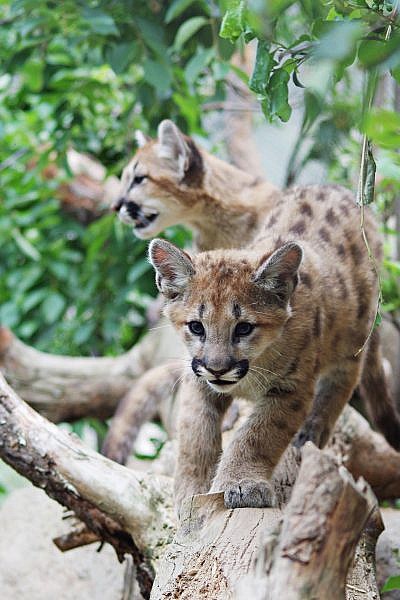

GUESTS CAN NOW SEE CUBS AND KAYA EVERY DAY IN ROCKY MOUNTAIN WILD
The three mountain lion cubs who were orphaned in Washington in late May are growing, playing and getting settled in their new home with their new “grandma” Kaya, 13-year-old CMZoo mountain lion. The four mountain lions are sharing den and outdoor space together, and can be visited every day in Rocky Mountain Wild.
Rocky Mountain Wild Keeper, Courtney Rogers, shares the latest update on the cubs, how to distinguish the lions from one another, and what’s next in the cubs’ progress.
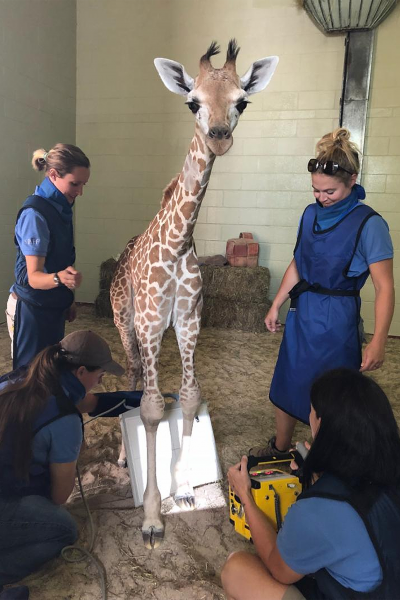

Back to The Waterhole Home Page
PLACENTA FROM PENNY THE GIRAFFE CALF’S BIRTH CONTRIBUTES TO GROUNDBREAKING GIRAFFE VETERINARY CARE AND RESEARCH
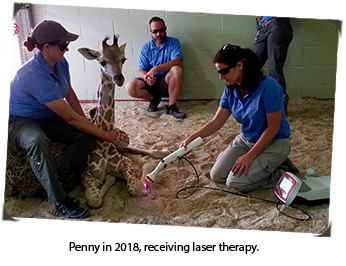
When Penny, a reticulated giraffe calf, was born at Cheyenne Mountain Zoo on June 4, 2018, Dr. Liza Dadone, head veterinarian and VP of mission and programs, couldn’t have known that the next few months of care for the sixteen-member giraffe herd would present such complicated cases. Since Penny’s passing late last summer, her legacy has continued both by helping people around the world fall in love with giraffe and by helping advance giraffe medicine in zoos.
Within months of Penny’s birth, the giraffe care team was managing unprecedented rare cases including a brand-new calf who needed intensive medical care, a chronic ligament strain in a mature male, and a mature female who would eventually reveal a false-positive pregnancy – one of only four such cases of the false diagnostic result ever documented.
Dr. Dadone did, however, know how precious a placenta could be to help improve both therapies and diagnostics for giraffe medicine. Minutes after then-20-year-old Muziki gave birth to Penny, Jason Bredahl, giraffe animal care manager at Cheyenne Mountain Zoo, picked up the placenta and handed it off to Dr. Dadone.
“I had been speaking with Dr. Priya Bapodra-Villaverde at Columbus Zoo and Aquarium about a new, more accurate giraffe-specific pregnancy test she had been working on. Although the test had been used successfully on other hoofstock species, we knew that part of the giraffe placenta could contribute to this research,” said Dr. Dadone. “We split the placenta between Dr. Bapodra-Villaverde’s team and the vet team at Colorado State University, who would use it to develop a line of giraffe stem cells that can be used to help manage arthritis and other conditions.”
In late July 2018, CMZoo had to say a heartbreaking goodbye to Penny, whose story had captured the hearts of people around the world. As CMZoo put Penny to rest, her legacy continued with her placenta’s research contributing to creating a new, more accurate giraffe pregnancy test, and to creating a giraffe stem cell line.
Laikipia was the first giraffe in our herd to be tested with the new pregnancy test. Laikipia was thought to be pregnant at the same time Muzuki was pregnant with Penny, but the fact that she never gave birth puzzled giraffe experts at CMZoo and beyond. Throughout the international network of AZA-accredited organizations with whom CMZoo shares and gains input on rare cases, like hers, she was one of only four giraffe ever known to consistently falsely test positive for pregnancy.
Ever since breeding with CMZoo giraffe bull, Khalid, Laikipia had tested positive for pregnancy – but did not test positive before breeding. The CMZoo giraffe care team used the usually reliable methods of confirming pregnancy in a giraffe, including a lack of menses and elevated progesterone levels in blood and fecal samples. They even attempted logistically challenging ultrasounds, which proved inconclusive, as they often do in giraffe.
By October 2018, Laikipia had surpassed her gestation window without signs of miscarriage and with consistently elevated progesterone levels, and Dr. Dadone and her team continued to look for ways to diagnose Laikipia’s condition.
The timing was almost perfect. The new pregnancy test, developed by Columbus Zoo’s lab partner BioTracking, Inc. was ready for real-world trials in spring 2019, after being used to successfully detect pregnancy in two giraffe at the Columbus Zoo. Knowing there was no way Laikipia was still pregnant, despite her continued positive pregnancy test results, Dr. Dadone knew Laikipia was the perfect candidate to test the accuracy of the new test.
“We thought, ‘if any giraffe could break this new test, it’d be Laikipia,’” said Dr. Dadone. “We also knew Msitu was pregnant, so we tested her pregnancy to validate the accuracy of this new diagnostic.”
The new blood test, which detects a protein only present in pregnant giraffe, called Pregnancy-Specific Protein B (PSPB), could also help confirm pregnancy sooner than traditional progesterone-detecting pregnancy tests. Even more helpful for veterinary staff and animal care managers everywhere, early results suggest it could more precisely predict when a calf might be born.
“On the anniversary of Penny’s birth, we got the news that the new pregnancy test, developed in part thanks to Penny’s contribution, appears to be a great new diagnostic tool for giraffe,” said Dr. Dadone. “Laikipia’s pregnancy test came back negative and Msitu’s came back positive. While the lab is still running samples from more pregnant giraffe, this is hugely promising. We have Penny and her mom, Muziki, to thank for helping us detect and confirm this new test can work in giraffe.”
Dr. Dadone and Columbus Zoo and Aquarium will continue collaborating on ways to better diagnose and monitor giraffe pregnancy. The new pregnancy test, once fully validated, should help the zoo community more accurately predict when their giraffe are pregnant and due to give birth.
At this stage, the vet team believes Laikipia has a hormone-secreting cyst, which isn’t life-threatening and doesn’t appear to be causing her any pain or discomfort, but can cause long-term elevations in progesterone. The team now plans to start her on hormone therapy to try to help her return to normal cycling. This is a therapy used in cattle and sometime other hoofstock, but has not been previously reported for giraffe.
The second half of Penny’s placenta was sent to Colorado State University, to grow a new line of stem cells used for therapeutic purposes in giraffe.
The Zoo previously used stem cell treatments grown from blood collected from a giraffe in our herd, that already trained to donate blood. However, there was some indication that stem cell lines developed from placentas could provide even greater therapeutic benefits for giraffe with chronic issues like arthritis.
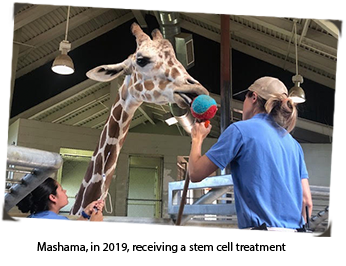
Penny’s stem cell line was used on two patients, the first of which was herself. Some of the cells were used to try to help Penny recover from a splay injury and infection. While that ultimately wasn’t enough to turn around her case, a second giraffe was also treated with stem cells grown from her placenta. At Blank Park Zoo in Des Moines, Iowa, a 21-year-old giraffe named Zuri was treated with cells to help manage her advanced age-related conditions. Following this treatment, Zuri’s coat grew in thicker and she had some clinical improvement. While Zuri passed away in May 2019, both of these cases are helping the zoo community learn more about clinical applications and potential benefits of stem cell therapy in zoo giraffe.
Stem cell therapy is now being used for 9-year-old CMZoo giraffe Mashama.
“Mashama has been dealing with sprained ligaments and a fracture in his right foot,” said Dr. Dadone. “Combine those issues with a ligament strain in his right front wrist [that looks like the right front knee], which preceded the fracture, and we have a pretty complex case to solve. We have tried therapeutic shoes, laser therapy, rest, and more. The next logical step is a cell stem treatment.”
While Penny’s placental stem cells have all been used with those first two cases, in July, Mashama was treated with a stem cell line grown at CSU. CMZoo is watching him closely and is hopeful the stem cell therapy can help him continue to heal, and help the zoo community learn more about applying novel therapies like stem cells to better manage health issues in giraffe.
The placenta from the calf born at CMZoo on July 6, 2019, will also be used to contribute to scientific advancements to make a stem cell line, like Penny’s did. Dr. Dadone and CMZoo staff will continue contributing to research and studies that will benefit the health of giraffe in human care, and in the wild.
Back to The Waterhole Home Page
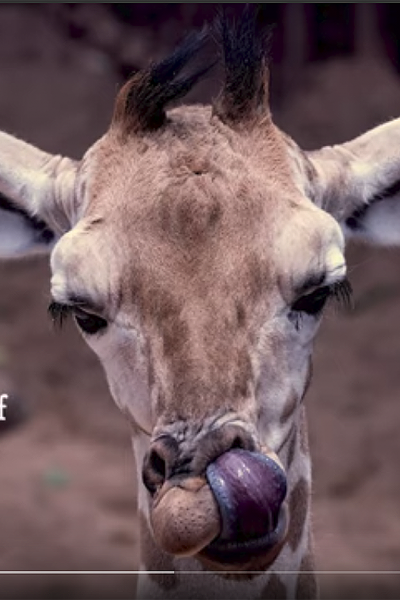

KEEPERS SAY CALF IS STRONG, INDEPENDENT, AND FULL OF PERSONALITY
July 6 at 1:20 p.m. MDT, we welcomed a baby girl to the herd! Hear from Jason, CMZoo giraffe animal care manager, about how the new calf’s first few weeks of life have been, and learn about what’s next for Msitu’s not-so-little girl.
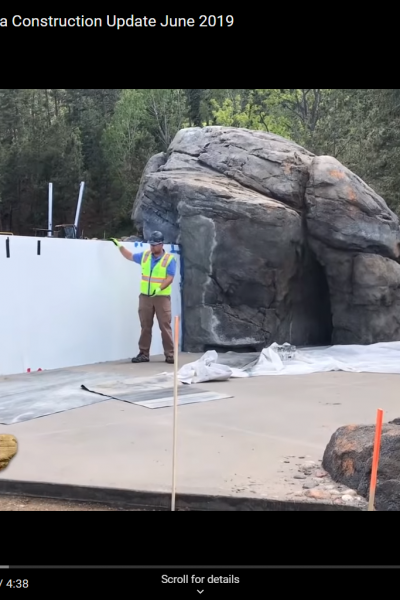

CMZoo animal care manager, Jeremy Dillon, gives Waterhole readers the first look inside the hippo building, a sneak peek at the nature trail, and updates on the penguin exhibit. Water’s Edge: Africa is scheduled to open late summer/early fall 2019.
FIRST-TIME LOOK INSIDE THE NEW HIPPO BUILDING, SET TO OPEN EARLY FALL
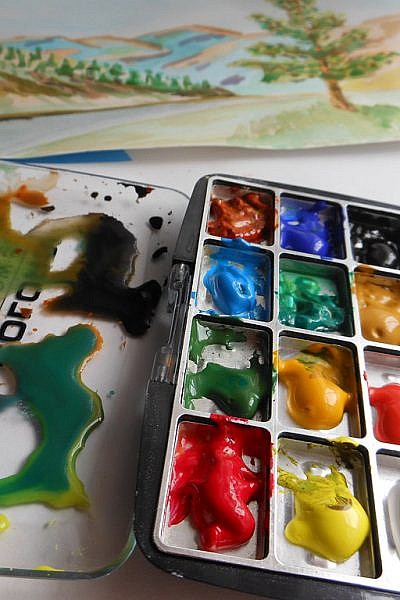

Cheyenne Mountain Zoo recently launched a new series of programs for those who are interested in connecting with nature, the outdoors and their families through hands-on and interactive experiences. Outdoor School programs are designed to encourage people of all ages to explore and engage with our Colorado home in a whole new way. Classes will engage the whole person (physically, mentally and emotionally) to help develop a stronger connection with our natural world.
Outdoor School classes may take place at Cheyenne Mountain Zoo, or offsite in other nature-based environments. The focus is less on animals at the Zoo and more on the powerful connection nature has on us as humans.
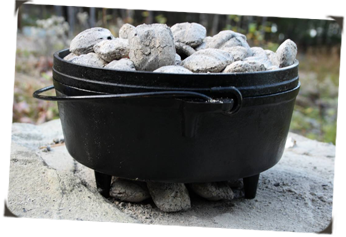
Upcoming classes offered through the Outdoor School beginning June 30 include:
– Watercolors in the Wild is an introductory program to a quick and mobile painting style that helps capture the best moments in nature. Take a break from the noise of the city and join us for an afternoon of exploring nature through art at Cheyenne Mountain State Park. Class participants will spend a little time in the classroom learning some techniques, then will head out into the park to start creating their own paintings. Each participant will receive their own “pocket palette” to travel with them and find inspiration and subject matter from nature.
– Dutch Oven Cooking is an alternative to your typical camping grill or freeze-dried meal options. Dutch oven cooking is a great way to make truly delicious meals in your backyard, while car camping, or on a river trip. This class will teach attendees to prepare three courses: appetizer, dinner with sides and a dessert. Each participant will walk away with recipe cards and a full stomach. Students will prepare their very own Dutch oven dinner to enjoy as part of the class.
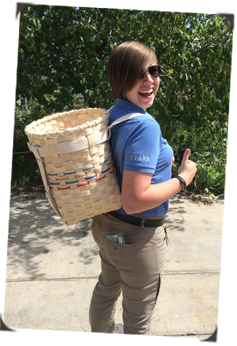
– Pack Basket Weaving is a truly hands-on crafting experience. Pack baskets are an alternative to a typical backpack. They are not only sturdy and durable, but eye-catching and versatile. This class will take place over a series of days, during which each participant will construct his or her own pack basket. Attendees will learn about the weaving supplies, process, technique and traditional uses.
These classes are just a small sampling of what to expect from CMZoo’s Outdoor School. Classes like wilderness photography, family hikes, primitive shelter building, primitive fire building, bird banding and more are soon to be listed as class options. Be sure to visit our Outdoor School page to see what is currently offered and sign up for a class that excites you!